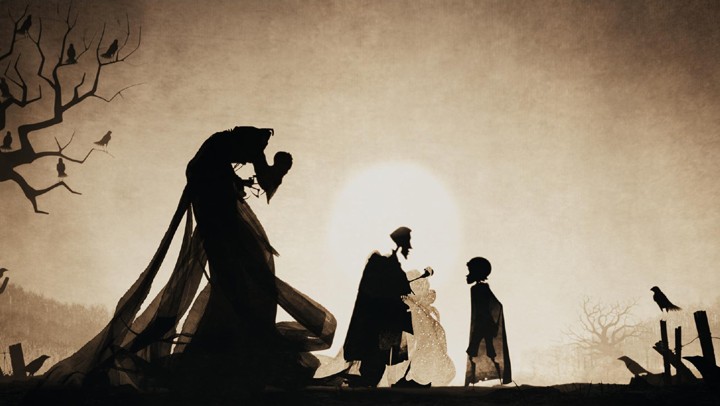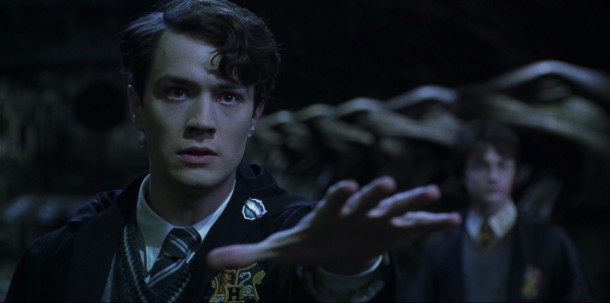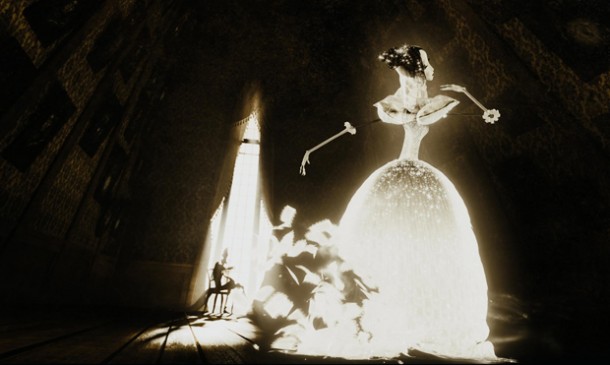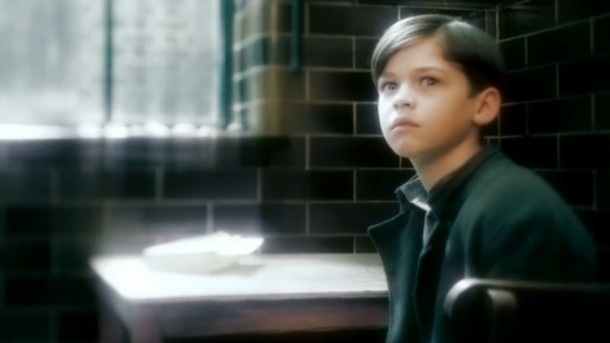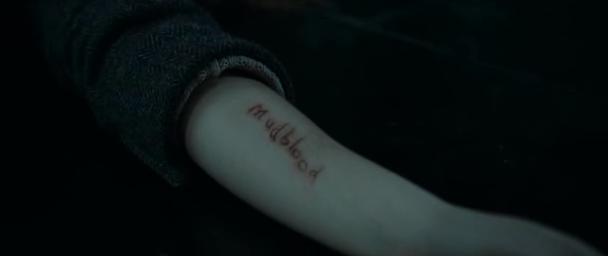J.K. Rowling is a prolific author who still manages to surprise her fanbase regularly. The Harry Potter series has indeed made quite the impact on numerous generations since it began, as I touched on in my article about re-reading the series as an adult. There are still many mysteries that Rowling has yet to release to her fans, and one of them that makes me wonder more than others is that of Salazar Slytherin’s origins and how it might have potentially played into the rest of the series.
I identify as a Slytherin
That surprises many people, as they believe them to be the “bad” House. To those people, I say that you haven’t read Rowling’s work carefully enough.
No House is permanently defined by such a sweeping definition, and as we saw throughout the books there are bad people from all Houses and walks of life, not just Slytherin. The lack of information on my House’s founder is particularly fascinating to me, because at least we got more information on other House founders.
Then I started to wonder if perhaps the origin of Slytherin was mysterious because of a reason. We don’t even really know where he comes from, just that the Sorting Hat says he’s from “fen,” which can be anything from Lincolnshire, Cambridgeshire, Norfolk, and a small area of Suffolk. While there are a couple of native species of snakes in Great Britain, I cannot imagine they’re as common as they might be in other areas. This led me to wonder if Voldemort wasn’t the only member of the Slytherin line to lie about his origins.
Before we get into my theory, I’d like to state what we currently know about Salazar Slytherin. From the Harry Potter Wikipedia, we know that “it is not established that Slytherin came from that particular region [fen].” Of course, we also know that he lived in the 10th century, founded Hogwarts with his other three friends, left the school after hiding his basilisk in the Chamber of Secrets, and died at some point in the Middle Ages. We also know that he was “ancient and monkey-like” and had a “long thin beard that fell almost to the bottom of his sweeping robes” that was white in color. We also know that he was power-hungry, possessed great cunning and determination, was a Parselmouth, and also valued pure blood over all others. He was considered as one of the greatest wizards of his age, even accomplishing Legilimency.
What we don’t have are hardcore facts beyond this. Even his physical attributes are very basic, at best. So, in truth, he could be from anywhere. Considering his most radical ancestors, Marvolo Gaunt and Tom Marvolo Riddle, share Slytherin’s reliance on blood purity and their ancestry, we can see this is one trait that passed down through the generations.
Could it also be that the lie about ancestry was passed down with Slytherin? There are many instances of history repeating itself or haunting the present in the Potter series, particularly when a character’s ancestry comes up. Harry is considered by many to be just like his father in many ways, not just in his looks, but in his sense of adventure, disregard for rules, and willingness to do what is right in the face of danger. The heir of Slytherin threat was apparent twice in the wizarding world (once in the 1940s and then again in the 1990s when the books are set). Albus Dumbledore attempted throughout his entire life to right the mistakes of what happened for his younger sister, Ariana, and his father, Percival.
Sirius Black, in an attempt to not be like his bigoted family, treated the wrong creature with disdain (Kreacher) that ultimately guided him to his death. The most “haunted” of the books is The Deathly Hallows, as the hallows themselves and the ancestors of those who held them are important in the present just as they were when Death first gifted and cursed the world with the hallows.
Two such known ancestors of the Peverell brothers from “The Tale of the Three Brothers” are Harry Potter and Tom Marvolo Riddle, better known as Lord Voldemort. Marvolo Gaunt, Voldemort’s maternal grandfather, claimed that he was a direct descendant not only of Salazar Slytherin, but of Cadmus Peverell, the man who owned the Resurrection Stone. As proof, he had a ring that had the Peverell coat of arms, what we now know is the Deathly Hallows symbol, that was set with the Resurrection Stone.
Harry Potter, as is well-known now after the ending of the series, is the descendant of Ignotus Peverell, the brother who chose the Cloak of Invisibility and then “greeted Death as an old friend.” Toward the end of The Deathly Hallows, in order to save everyone else, Harry must greet Death (in this case, Voldemort) as an old friend, without knowing that he’ll be able to choose whether or not he’ll live once he’s been killed.
But let’s get back to Voldemort and his ancestors for a moment. Cadmus Peverell wanted the Resurrection Stone because he pined after his love, who was dead, and he wished for a way to bring her back. He does, but she is not happy in this world, and he eventually lets her return before committing suicide presumably to be with her. The Harry Potter Wiki article further explains that Cadmus seemingly lived long enough to sire children, since the Gaunts are his descendants, and it’s possible that this love of his had died during childbirth.
If we think about that momentarily, it fits with another well-known character’s origin story: Voldemort. His mother, Merope, was deeply in love with a muggleborn, Tom Riddle, and presumably put him under a love potion so that she could marry him and have his child. She felt shameful at having to put her beloved under magic in order to make him love her in return, and she had figured since enough time had passed, and because she was about to bear his child, that he would love her even without the potion. Unfortunately, she was wrong. Merope was left alone and pregnant, having been cast out by her father and brother. She died soon after birthing and naming the boy who would grow to become Voldemort.
Voldemort, later in life, was disgusted by his mother’s activities. And at first, it couldn’t have been because of the pureblood/muggleborn issue, because he didn’t realize he came from wizarding blood in the first place. It was a simple, base instinct of hatred toward a mother for not loving him enough, in his mind, to stay alive. Once he discovered his origins, Voldemort grew even more righteous in his fury, because his mother had loved a muggleborn more than she had loved him, the way he saw things. After further discovering his ancestor of Cadmus Peverell and his tragic end, Voldemort must have sworn off love of any kind by this point. As he saw it, and as Dumbledore tells the readers, Voldemort saw love as a weakness. And, in his mind, it had only brought tragedy. What he failed to realize was that history was attempting to teach him a lesson to be careful in love, not shun it altogether.
So did he take another lesson from the pages of his ancestor’s book when lying about his origins? Voldemort claimed pure blood, but the knowledge of Slytherin’s bloodline or even from where he hails is speculation at best. What I looked into was the etymology of the name “Salazar” (because the only etymology from “Slytherin” comes from Rowling’s books). This is what I discovered:
And “Salazar” is of Spanish or Portuguese origin, and means “dweller in the old hall.” It is from the Romance word “sala,” meaning “hall” and the Basque word “zahar,” meaning “old.” It can also refer to Salazar in Burgos, Spain. Obviously, this is a perfect name for Slytherin, who not only founded Hogwarts, but also created the Chamber of Secrets.
According to Wikipedia, the name originates from the town of the same name, which is in northern Burgos, Castile. Further, the name originates from a certain noble family that held a fief in that area. Wikipedia states, “Salazar is also a common surname among Roma people. Due to several censuses made in the Kingdom of Castile during the 14th and 15th centuries, every Castilian subject was forced to take a name and two surnames. The Roma, who used to call themselves only by a first name, decided to take established surnames to add prestige to their families. They chose from among the oldest noble families, usually of Basque origin, thus it is extremely common to find Roma with surnames such as Heredia, Salazar, Mendoza, or Montoya.”
It is possible that during her research, Rowling drew inspiration from the Roma people taking a new, well-known name as an opportunity to re-create themselves and garner respect. Perhaps this is what Slytherin did for himself and, as a result, Voldemort did the same thing to deny his own recent ancestry and recreate himself. This is why he chose a new name, one that was an anagram, so he wouldn’t have to share a name with a “Mudblood.”
Voldemort cannot survive this story, because he spent all of his life denying his past. Dumbledore suffered the same fate. Both men knew the history of their families, for good or bad, and chose to cover them up so that they could become great men themselves. Voldemort’s was simply for power and eternal life for himself. Dumbledore’s, on the other hand, was to pay penance for what happened in his youth, and also perhaps to protect the wizarding world as a whole. Because they could not truly accept their pasts, they had to perish.
Harry, on the other hand, understood his ancestry and knew what he had to do, for better or worse. While he didn’t want to die, he knew that countless others would perish if he didn’t turn himself over to Voldemort. He learned from his own past mistakes and of his parents’, and instead took the gift of love that they had given to him in order to save the wizarding world.
Never being able to escape your past, and learning from it and accepting it as a part of yourself, but not allowing it to define who you are would be in keeping with many of the other lessons readers take away from the Potter series. Is it possible Rowling will ever acknowledge Slytherin’s past so that we can understand Voldemort even more? Only time will tell.

